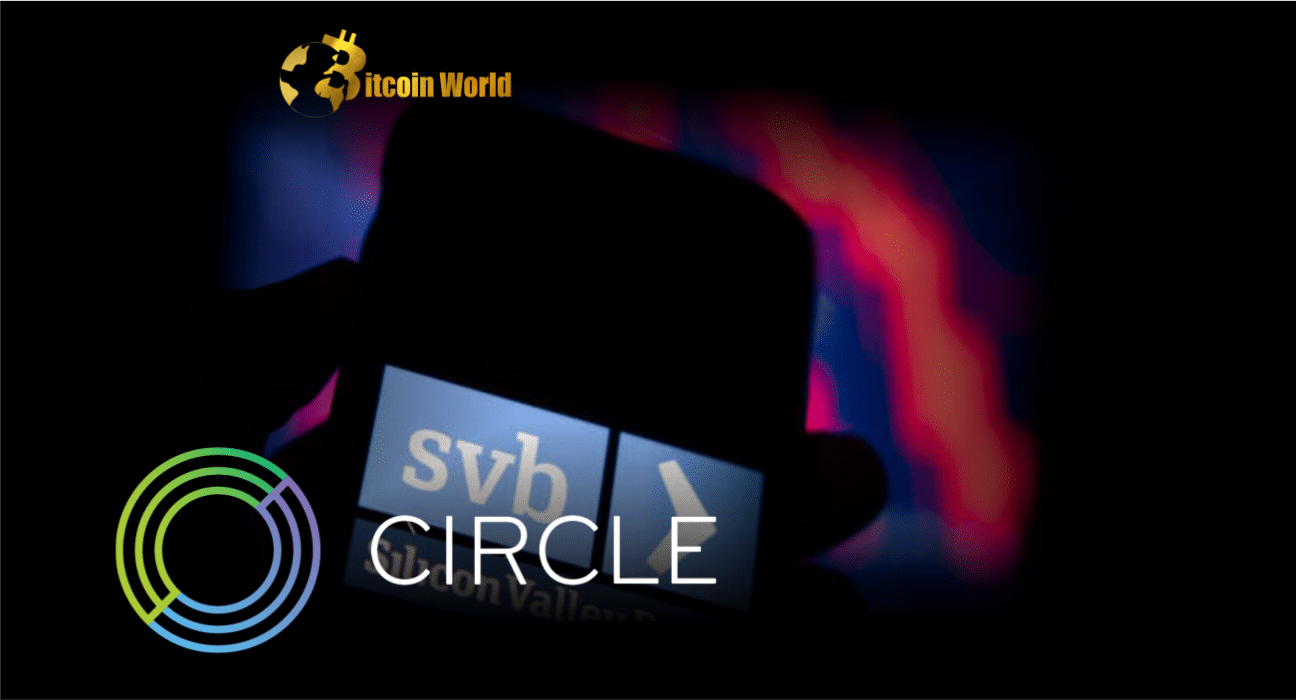In the fast-paced world of cryptocurrency, even stablecoins – designed to be, well, stable – can face unexpected turbulence. Recently, USD Coin (USDC), a leading stablecoin issued by Circle, experienced a moment of drama when $3.3 billion of its reserves were temporarily frozen due to the collapse of Silicon Valley Bank (SVB). Let’s dive into what happened, how Circle navigated this crisis, and what it means for the broader stablecoin market.
The SVB Shockwave: What Triggered the USDC De-peg?
Silicon Valley Bank’s sudden downfall sent ripples throughout the financial world, and the crypto market wasn’t spared. Circle, a significant player in the stablecoin space, had a substantial portion of USDC’s reserves held at SVB. When SVB was declared insolvent and funds were initially frozen, it understandably caused concern. As Jeremy Allaire, CEO of Circle, stated, $3.3 billion of USDC reserves were inaccessible at SVB as of March 13th.
This news triggered a temporary de-pegging of USDC. Stablecoins like USDC are designed to maintain a 1:1 peg with the US dollar. However, market uncertainty and fears of Circle’s ability to access its funds led to a drop in USDC’s value below $1. This ‘de-peg’ event highlighted the inherent risks, even for assets designed for stability, when traditional financial systems face turmoil.
Circle’s Swift Response: Accessing Frozen Funds and Restoring Confidence
Amidst the uncertainty, Circle acted swiftly to address the situation and reassure the market. Jeremy Allaire provided timely updates, communicating the steps Circle was taking to resolve the issue. In a statement to Bloomberg Markets on March 14th, Allaire expressed confidence that Circle would regain access to “if not everything, very close to everything” from SVB.
And indeed, they did. Circle successfully regained access to the $3.3 billion held at SVB. This positive development was crucial in restoring confidence in USDC and its dollar peg. The ability to access these funds demonstrated the resilience of Circle and the underlying mechanisms designed to support USDC’s stability.
USDC vs. Tether (USDT): A Tale of Two Stablecoins
The SVB event and USDC’s temporary de-peg also shed light on the dynamics within the stablecoin market, particularly the comparison between USDC and its largest competitor, Tether (USDT).
- Market Cap Shift: Following the SVB news, USDC experienced significant redemptions, leading to a roughly 10% decrease in its market capitalization since March 11th, according to TradingView data. This indicates that some holders chose to move their funds away from USDC during the period of uncertainty.
- Tether’s Gain: Interestingly, during the same period, Tether (USDT) saw a slight increase in its market cap, growing by over 1% to reach $73.03 billion. This suggests that some of the funds flowing out of USDC may have moved into USDT, possibly perceived as a ‘safer’ haven during the crisis, or simply benefiting from market volatility.
- Market Dominance: Despite these shifts, the event highlighted the ongoing competition between USDC and USDT for market dominance in the stablecoin space. Both now hold roughly similar market capitalizations, emphasizing their positions as leading stablecoins.
The Strength of USDC’s Reserves: Transparency and Liquid Assets
A key factor in USDC’s ability to weather the SVB storm lies in the composition and transparency of its reserves. Even though $3.3 billion was temporarily inaccessible, this amount represented less than 8% of USDC’s total reserves, based on their January reserve report published on March 2nd. This relatively small percentage, while significant in absolute terms, underscores the overall robustness of USDC’s backing.
Furthermore, the report detailed that USDC is over 100% collateralized. This means that for every USDC in circulation, Circle holds more than $1 in reserve assets. Crucially, over 80% of these reserves are held in short-dated United States Treasury Bills.
Why are US Treasury Bills important?
- Highly Liquid: Treasury Bills are easily bought and sold, ensuring quick access to funds when needed.
- Safe Haven: They are direct obligations of the United States government, widely considered among the safest investments globally.
- Global Standard: Treasury Bills are recognized and trusted worldwide, adding credibility to USDC’s reserves.
This focus on highly liquid and safe assets like US Treasury Bills provides a strong foundation for USDC’s stability and played a crucial role in its recovery from the SVB event.
Key Takeaways and the Future of Stablecoins
The USDC and Silicon Valley Bank situation offers several important insights for the cryptocurrency and stablecoin markets:
- Stablecoins Aren’t Risk-Free: Even stablecoins, designed for stability, are not immune to risks stemming from the traditional financial system. Bank failures and systemic events can impact even collateralized digital assets.
- Transparency is Paramount: Circle’s transparent reporting of USDC’s reserves and proactive communication during the crisis were vital in maintaining trust and facilitating recovery. Transparency builds confidence in stablecoins.
- Diversification Matters: While US Treasury Bills are considered safe, the event may prompt stablecoin issuers to consider further diversification of their reserve holdings to mitigate risks associated with single institutions or asset classes.
- Resilience of the Crypto Market: Despite the temporary de-peg and market fluctuations, USDC successfully restored its dollar peg and market confidence rebounded. This demonstrates the underlying resilience of the cryptocurrency market and its ability to adapt to challenges.
Looking Ahead
The USDC episode serves as a valuable learning experience for the stablecoin industry and the broader crypto ecosystem. It highlights the importance of robust risk management, transparent communication, and the inherent interconnectedness between traditional finance and the digital asset world. As stablecoins continue to play a crucial role in global investments and the digital economy, navigating these challenges and reinforcing stability mechanisms will be paramount for their continued growth and adoption.
Disclaimer: The information provided is not trading advice, Bitcoinworld.co.in holds no liability for any investments made based on the information provided on this page. We strongly recommend independent research and/or consultation with a qualified professional before making any investment decisions.


